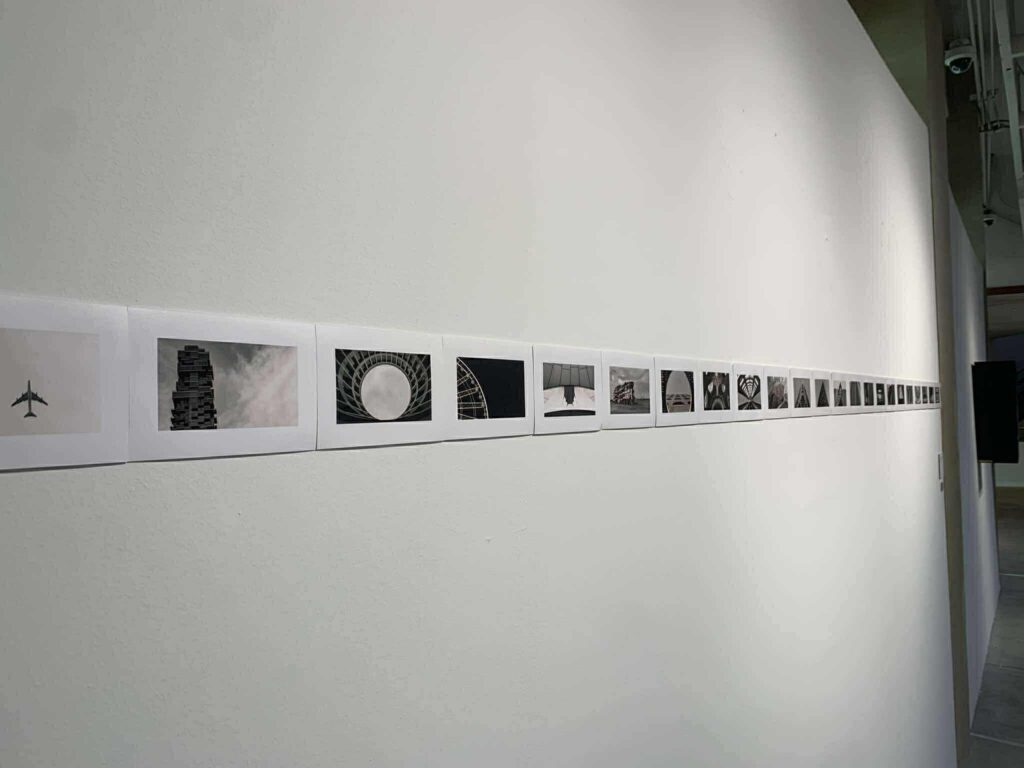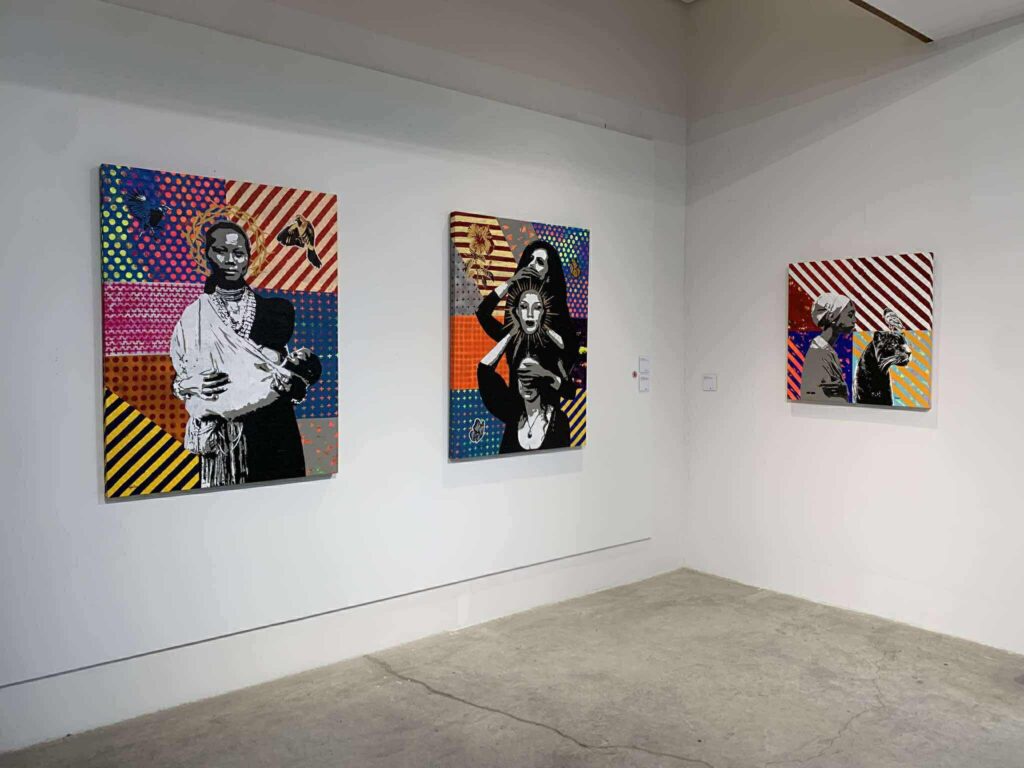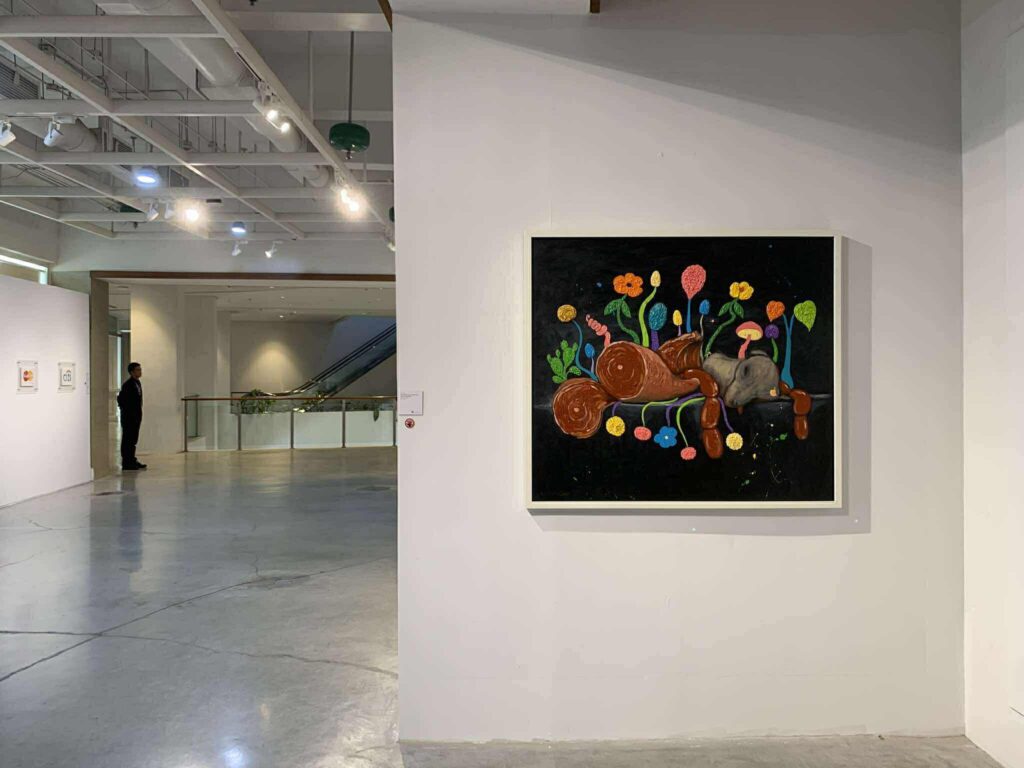In her essay, “With Practicality Comes a Practice: The Artist as Curator,” Sarah Pierce examines the initial instance of artists assuming control over the curation and presentation of their own artworks. Pierce pointed out that this occurred in 1648 when a group of artists lobbied with King Louis XIV for the establishment of a Royal Academy of Painting, intending to distinguish their creations from artisan trades.
In the Philippines, there has been a recent surge in curatorial projects initiated by artists. Increasingly, artists are taking on roles that allow them to control how their artworks are presented and understood. Perhaps this is where the exhibition, “Cultural Workers? Not Creatives,” draws its inspiration from.

Organized by artists Lester Amacio, Rhaz Oriente, Moreen Austria, and Ricky Francisco, who took the role as both artists and curators at the Iloilo Museum of Contemporary Art (ILOMOCA). The exhibition explores the notion of artists doubling as “cultural workers.” This umbrella term often refers to individuals who work within cultural agencies or institutions, or those who independently organize, thereby contributing to the production, promotion, and consumption of culture.
Commencing with a strong declaration in its title, the exhibition challenges the audience with a fundamental question: who are considered “creatives”? For the purpose of this discussion, and in the context that the organizers seemingly attributed to the title, “creatives” refers specifically to artists. While it could be argued, using the nominal definition of the word, that anyone can create, it is safe to deduce that by showcasing their artworks within the museum’s white walls, we can certainly consider all the participating cultural workers as creatives.
However, it is crucial to acknowledge that a separate, significant discussion revolves around the act of curation itself, the role of curators, and the contentious question of artists assuming curatorial responsibilities. This is because in curating, one inherently determines whose voices are amplified, whose narratives are shared, and what messages are ultimately communicated to the audience.


In Iloilo, a relatively nascent art scene, the use of the word “curation” often signifies the act of organizing a group of artists to exhibit works that may or may not be thematically aligned, within a space determined by its accessibility to either the artists or the audience. Frequently, it is also conflated with the mere hanging of artworks, whether randomly, in a supposed dialogue with each other, or simply following a pattern at face value. This can be attributed to the dearth of institutional spaces for art, a limited number of Fine Arts courses, and the general public’s relatively belated appreciation for contemporary art. But what the province lack in theory, it compensates through talent. This is where artists step in.
The participating artists/curators seemingly proved a point: that they too are creatives, no matter what deconstruction it means to the art world in which they operate. Other participating artists include Ross Almendras, Justin Amrhein, Julio Jose Austria, Eric John Eigner, Dave Lock, RA Tijing, Benj Pore, Amiel Roldan, Jumjum Ouano, and Ivy Marie Apa. All of them hold other roles that fall under the umbrella of cultural work, yet they maintain a prolific art practice.
The process of selecting who to include in this exhibition was perhaps, as the curators implied during the talk that followed its opening, based on familiarity within their circle. The artworks featured are a sampler of works that these artists want to represent their practice, save for a seemingly massive installation by Les Amacio, consisting of floating courier boxes tied with a black ribbon. This is perhaps an allegory for labor, the proverbial box in which cultural workers are packaged by the inherent social constructs of the art world.
In his text for the exhibition, Dave Lock mentioned his hope for the exhibition to open a discourse. We can view it as a call to consider the care that we give to the work that is not outwardly seen by the audience. And perhaps, it can also be an invitation for the Ilonggo audience to reframe how they look at exhibitions.
